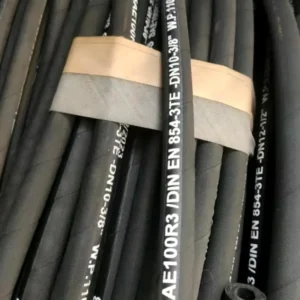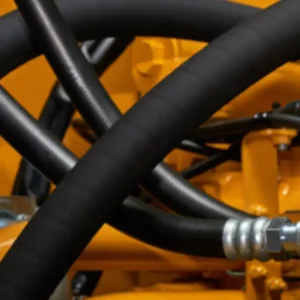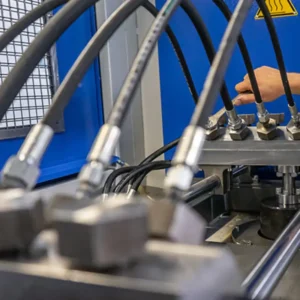Choosing the right rubber compound is a critical decision that can determine the success or failure of a product. With so many options available, it’s easy to feel overwhelmed. At our core, we believe that understanding the fundamental differences between materials is the key to making a sound choice.
Two of the most common and versatile rubber compounds are EPDM and NBR, and while they may look similar, their properties and ideal applications are worlds apart. In this comprehensive guide, we’ll break down the key differences between EPDM and NBR rubber to help you select the perfect material for your specific needs.
What is EPDM Rubber?
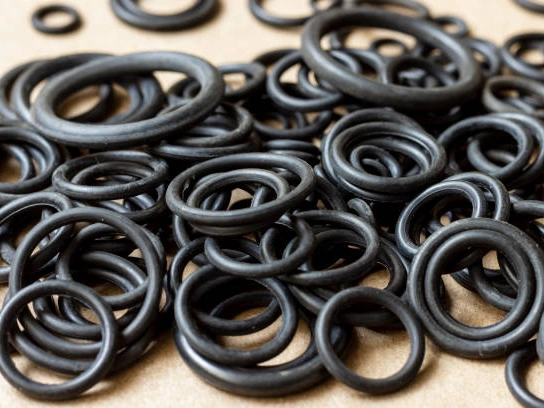
EPDM stands for Ethylene Propylene Diene Monomer, a synthetic rubber celebrated for its exceptional durability in outdoor and harsh environmental conditions. The unique chemical structure of EPDM provides it with several advantages, particularly its outstanding resistance to weathering, ozone, and UV radiation. As your material experts, we know that when an application requires a seal or gasket that must perform reliably under the sun or in extreme temperatures, EPDM is often the first material we recommend.
EPDM rubber is a non-polar compound, which makes it an excellent choice for a variety of applications where it will be exposed to polar substances. It has superior resistance to acids, alkalis, ketones, and steam. Its stable chemical structure also provides an impressive temperature range, typically from -45°C to 150°C, making it suitable for both cold and hot environments.
However, EPDM’s non-polar nature means it has a significant weakness: very poor resistance to oils, fuels, and other non-polar hydrocarbon solvents. If exposed to these substances, EPDM will swell, soften, and lose its mechanical properties, leading to premature failure.
Key Characteristics of EPDM Rubber:
- Exceptional Weather Resistance: Resists degradation from UV light, ozone, and general weathering.
- Wide Temperature Range: Performs reliably in both high and low-temperature applications.
- Chemical Resistance: Highly resistant to polar chemicals like water, steam, acids, and brake fluids.
- Poor Oil & Fuel Resistance: Not suitable for applications involving petroleum-based oils and fuels.
What is NBR Rubber?
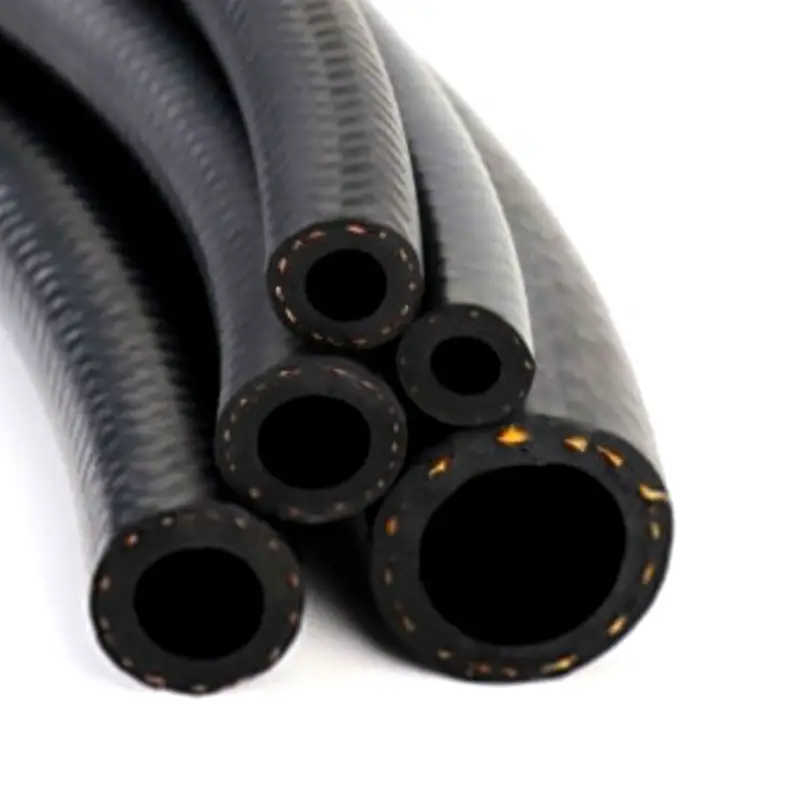
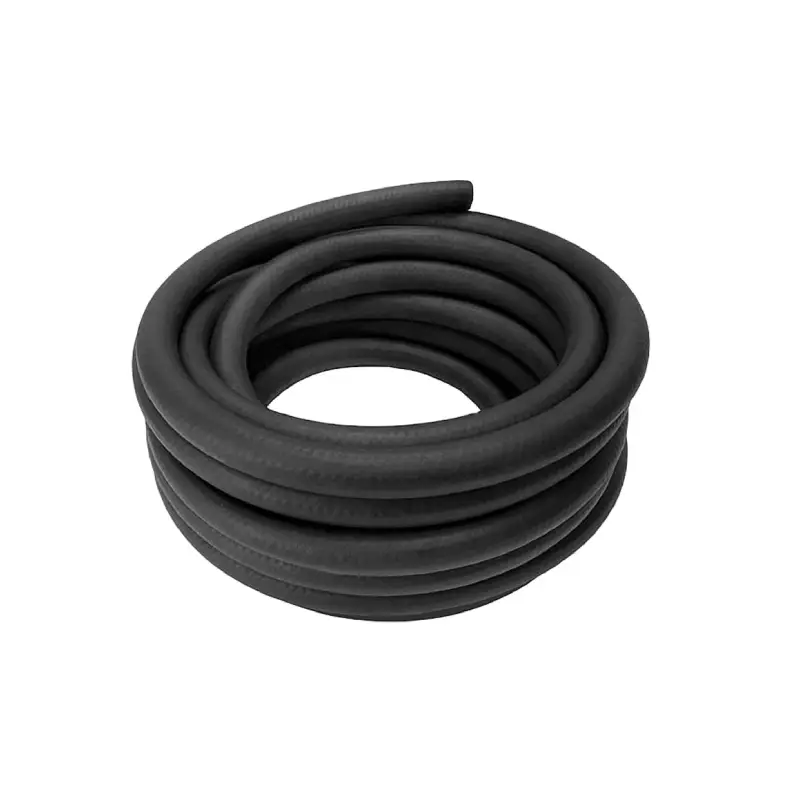
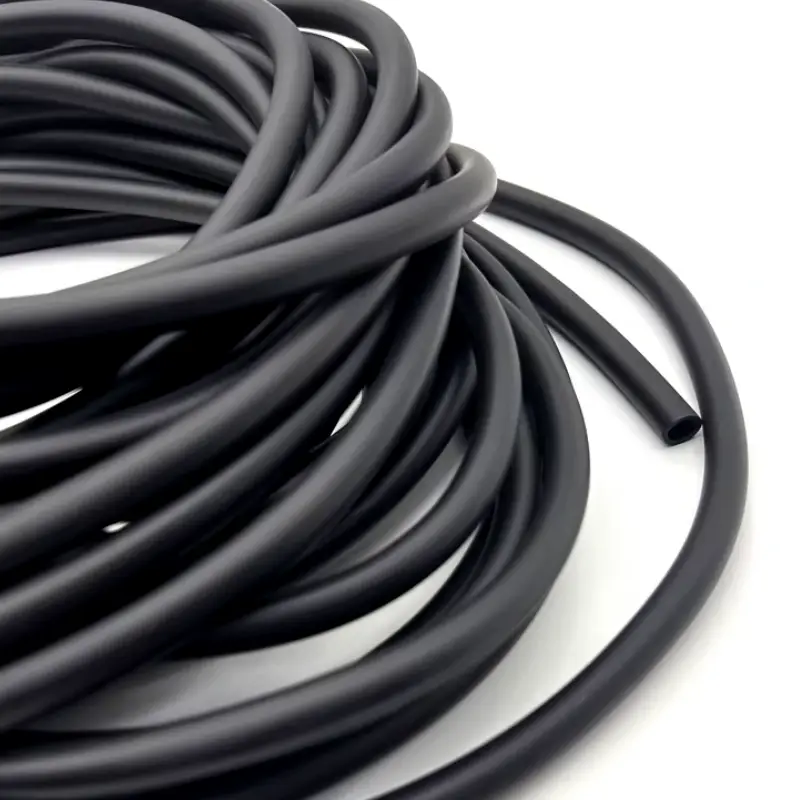
NBR, or Nitrile Butadiene Rubber, is a synthetic elastomer renowned for its primary strength: superior resistance to oils, fuels, and other hydrocarbons. Unlike EPDM, NBR is a polar compound, which gives it the opposite properties. For our customers working in automotive, industrial, and aerospace industries, NBR is an indispensable material for any application where oil, fuel, or hydraulic fluid sealing is a requirement. It is the go-to choice for preventing leaks and protecting critical systems.
Nitrile rubber’s excellent oil and fuel resistance is its most defining feature, but it also offers good abrasion resistance and impressive tensile strength. Its typical operating temperature range is a bit narrower than EPDM, usually from -40°C to 120°C. The major drawback of NBR is its vulnerability to weathering and ozone. Exposure to sunlight and air causes it to become brittle and crack over time, which is why it is almost exclusively used in sealed or internal applications where it is protected from the elements. This key difference is what separates the use cases of Nitrile vs EPDM so distinctly.
Key Characteristics of NBR Rubber:
- Excellent Oil & Fuel Resistance: The ideal choice for sealing against petroleum-based lubricants and fuels.
- Good Abrasion Resistance: Durable and long-lasting in dynamic applications.
- Poor Weather Resistance: Susceptible to degradation from UV light and ozone.
- Limited Temperature Range: Not suitable for applications with extremely high or low temperatures.
EPDM vs NBR Rubber

Nitrile Butadiene Rubber (NBR) and Ethylene Propylene Diene Monomer (EPDM) are two of the most common synthetic rubbers used for seals and hoses, but their suitability differs dramatically based on the working environment. The core distinction lies in their molecular structure, which dictates their resistance to oil, water, and outdoor elements. Selecting the wrong material can lead to premature system failure.
1. Oil and Fuel Resistance
NBR Rubber
Nitrile rubber is the gold standard for sealing applications involving petroleum-based fluids. Its polymer chain contains acrylonitrile, a polar group that makes the material highly resistant to swelling and degradation when exposed to oils, greases, gasoline, and hydraulic fluids. This strong oil compatibility makes NBR the primary choice for fuel lines, oil seals, and hydraulic system gaskets in the automotive and aerospace industries.
EPDM Rubber
EPDM has poor resistance to petroleum-based oils and fuels. When exposed to non-polar fluids like mineral oil or gasoline, EPDM absorbs the oil, causing it to swell significantly, lose its mechanical strength, and eventually disintegrate. For this reason, EPDM is strictly avoided in applications involving direct contact with hydrocarbons, such as engine oil sumps or fuel systems.
2. Weathering and Ozone Resistance
NBR Rubber
Nitrile rubber has poor resistance to outdoor elements. Exposure to UV light, sunlight, and ozone (a natural component of air and a byproduct of electrical discharge) causes the rubber to harden, crack, and fail prematurely. Therefore, NBR components are typically limited to indoor, enclosed, or protected environments, such as inside machinery or beneath vehicle hoods.
EPDM Rubber
EPDM offers excellent resistance to ozone, UV, and general weathering. Its fully saturated polymer backbone prevents the chemical reactions that cause other rubbers to crack when exposed to the atmosphere. This makes EPDM the preferred material for outdoor applications, such as window seals, weatherstripping, roofing membranes, and automotive cooling system hoses.
3. Temperature Range
NBR Rubber
Standard NBR formulations typically handle a temperature range from approximately −40∘C up to +100°C or +120°C. While it performs well at moderate heat, its service life diminishes rapidly above this range. Low-temperature flexibility is also generally adequate, but not as exceptional as EPDM.
EPDM Rubber
EPDM generally withstands a broader and higher continuous temperature range, typically from −50∘C up to +150∘C. Its superior thermal stability and excellent resistance to steam make it the better choice for high-temperature coolant hoses, brake systems, and industrial steam applications.
4. Water and Steam Resistance
NBR Rubber
NBR has good resistance to water and ethylene glycol-based coolants. However, it is not the ideal choice for high-pressure, high-temperature steam applications. Prolonged exposure to hot water or steam can lead to hydrolysis and a gradual reduction in the material’s sealing capability.
EPDM Rubber
EPDM rubber is known for its excellent resistance to water and steam. It is widely used in water systems, appliances, and automotive cooling systems because it resists degradation from polar fluids, including water, steam, and glycol-based brake fluids.
5. Mechanical Properties
NBR Rubber
NBR offers good mechanical properties, including high tensile strength, wear resistance, and abrasion resistance. This makes it well-suited for dynamic seals and applications where the rubber is subjected to friction or mechanical stress, such as rolling components and high-pressure seals in hydraulic systems.
EPDM Rubber
While EPDM has good overall strength and excellent resistance to compression set (ability to return to its original shape), its abrasion and tear resistance are generally inferior to NBR. EPDM is typically chosen more for static sealing, weatherproofing, and fluid transfer where mechanical wear is not the primary failure mode.
Here are some differences between NBR hoses and EPDM hoses:
| Feature | NBR (Nitrile Butadiene Rubber) | EPDM (Ethylene Propylene Diene Monomer) |
| Oil and Fuel Resistance | Excellent (The material of choice) | Poor (Swelling and degradation occurs) |
| Ozone/Weather Resistance | Poor (Cracks when exposed to UV/Ozone) | Excellent (The material of choice) |
| Max Continuous Temperature | Up to +100℃ to +120℃ | Up to +150℃ |
| Water and Steam Resistance | Good (Adequate for water/coolant) | Excellent (Ideal for steam and water systems) |
| Abrasion Resistance | Good to Excellent | Fair to Good (Inferior to NBR) |
How to Choose EPDM and NBR Rubber Hoses?
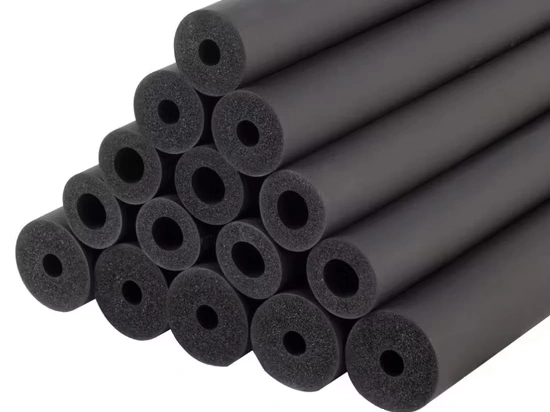
Choosing between EPDM and NBR rubber hoses is a critical decision that directly impacts system longevity and performance. We must carefully evaluate the media being transferred and the operating environment, as these two elastomers have fundamentally opposing chemical resistances. The wrong choice will lead to rapid hose failure due to swelling or premature cracking.
Key Factors for Selecting EPDM vs. NBR
- Fluid Compatibility (Polar vs. Non-Polar): Select NBR for transferring non-polar fluids like petroleum-based oils, gasoline, diesel, and hydraulic fluid. Conversely, choose EPDM for polar fluids, including water, steam, glycol-based coolants, and brake fluids. The difference in their molecular structure dictates which media the hoses can safely handle without degrading.
- Environmental Exposure (Outdoor vs. Enclosed): Choose EPDM for applications exposed to the outdoors, as it provides excellent resistance to ozone, UV light, and general weathering. The material is inherently stable and resists surface cracking. Use NBR only for enclosed, protected environments, such as internal machinery or areas strictly shielded from sunlight and atmospheric aging.
- Operating Temperature and Steam: We prefer EPDM for applications involving high-temperature water or steam, as it maintains superior stability and integrity up to approximately +150 °C. NBR is adequate for moderate temperatures but should be avoided above +120 °C and in high-steam environments, as its performance properties begin to diminish.
- Low-Temperature Flexibility: Opt for EPDM in environments where flexibility must be maintained at extremely cold temperatures, as it remains highly flexible down to around −50°C. NBR becomes stiffer and can lose its sealing capability below approximately −30 °C. This factor is crucial for components operating in frigid climates.
- Mechanical Stress and Abrasion: Choose NBR when the hose material is subjected to high mechanical wear, abrasion, or dynamic forces, such as seals or roller components. NBR generally offers better tensile strength and tear resistance than EPDM. Use EPDM where the primary demand is resistance to environmental factors rather than physical stress.
Common Applications for EPDM and NBR
To give you a better idea of where these materials are used, here are some real-world examples that illustrate why one is chosen over the other.
Typical EPDM Applications:
- Automotive: Radiator and heater hoses, weatherstripping, window and door seals.
- Construction: Roofing membranes, waterproofing sheets, and expansion joints.
- HVAC: Gaskets and seals for air ducts and filters.
- Braking Systems: O-rings and seals in brake fluid systems.
Typical NBR Applications:
- Automotive: Fuel and oil hoses, O-rings, gaskets, and seals for engines and transmissions.
- Industrial: Hydraulic seals, pneumatic O-rings, pump diaphragms.
- Aerospace: Fuel tank seals and gaskets.
Conclusion
NBR (Nitrile Butadiene Rubber) and EPDM (Ethylene Propylene Diene Monomer) are defined by opposite chemical resistances, driven by their distinct molecular structures. NBR is a non-aromatic polymer, making it the superior choice for use with petroleum-based non-polar fluids like engine oils, gasoline, and hydraulic fluids, where it resists swelling and degradation. This specialized oil-resistance is NBR’s core advantage.
Conversely, EPDM excels in resisting polar fluids and harsh environmental aging. It is highly recommended for water, steam, glycol-based coolants, and brake fluids, and boasts outstanding stability against ozone and UV exposure, preventing cracking in outdoor applications. EPDM’s wider temperature tolerance also allows it to handle continuous high heat up to +150℃, exceeding NBR’s typical limits.
The selection hinges entirely on the operating environment’s demands. Choose NBR for oil and fuel systems in protected areas, and EPDM for outdoor weatherproofing, hot coolant, or steam lines where oil exposure is absent. For guaranteed performance in your industry, contact Gushan Rubber today to get your wholesale quote on custom EPDM and NBR hoses.

